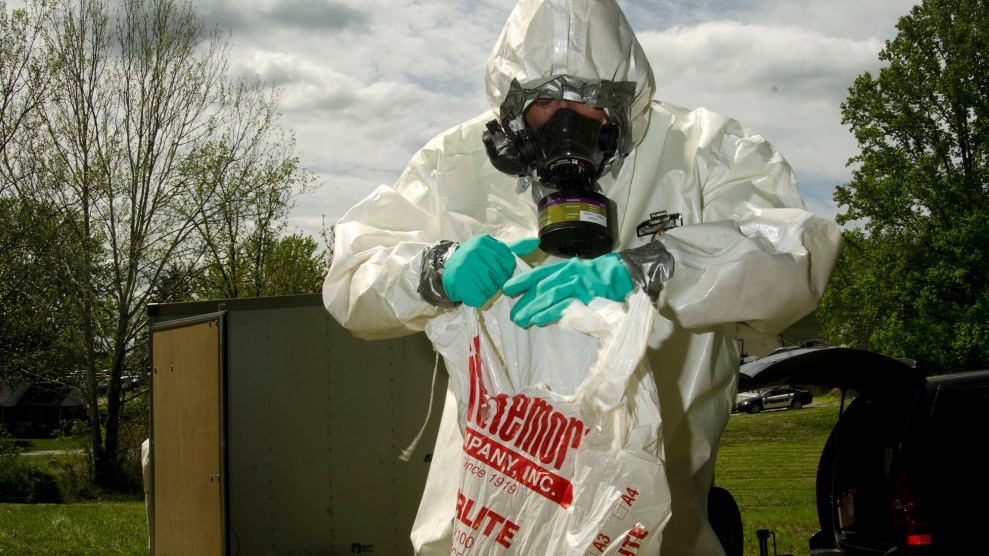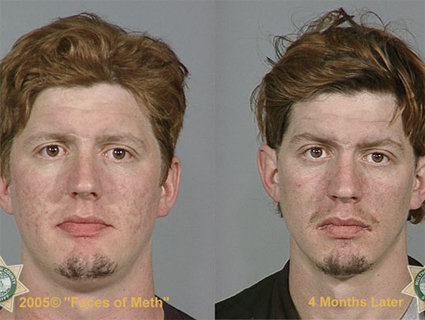When choosing a photographer to shoot Jonah Engle’s story on methamphetamines, we knew we wanted someone who would be respectful of the people in Laurel County, Kentucky, where much of the piece was reported. We needed someone who could work with both law enforcement and the locals, a photographer who knew the area and would shoot something beyond your standard “meth is bad” photo story. Stacy Kranitz was our first choice.
Living and taking photographs in Appalachia since 2009, Kranitz has dug deep into the hills of West Virginia, Eastern Kentucky, and southeastern Ohio. Her intimate look at life in one of the poorest areas of the country is unflinching and honest. In a region notoriously wary of outsiders—particularly those with cameras—Kranitz shoots as an insider, bringing viewers to swimming holes and wild parties, hanging out on sweltering summer nights, riding in the backseat of cars blasting down two-lane highways.
I talked with Kranitz about how she got the shots to accompany Engle’s meth story and about working in a place where any outsider with a camera is viewed with justifiable suspicion.
Mother Jones: When you got to Kentucky, the story had been reported almost a year earlier. What were some of the hurdles you ran into because of the time that had passed between when it was reported and when you got there to shoot it?
Stacy Kranitz: It was a real challenge to put together the logistics for the story. Jonah, the writer, had connected with and written about people that we could not locate. Some were no longer interested in making their story public. He met a young woman who watched her parents succumb to meth addiction when she was 12. Now 23 with a child of her own, she originally agreed to let me photograph her with her family. Her parents initially liked the idea of a family portrait, but, as we approached the day of the shoot, the family had several arguments about whether it was a good idea to dig up a very painful past. The young woman thought it was important to share what they went through in hopes that it would be helpful to others, but her parents felt a lot of shame about this time in their lives. She called me to cancel, and I really could not blame her for wanting to honor her parents’ wishes and keep peace in the house they all shared by keeping her family out of the public eye.
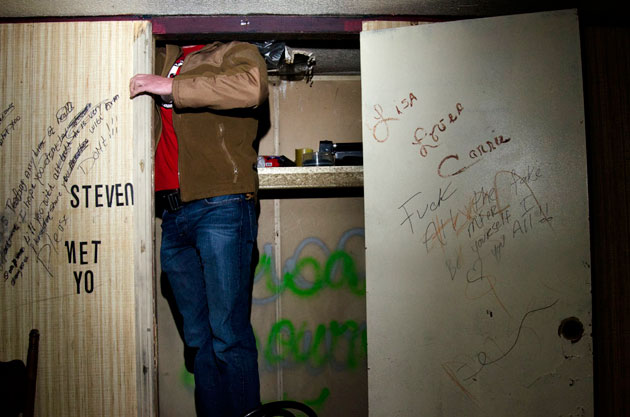

MJ: Were the law enforcement officers you worked with open to you following them?
SK: Fortunately, we got very lucky with Jason Blank and the entire Laurel County Sheriff’s Department. They were very low-key and open to me spending time with them. I originally asked to spend two days observing Jason work but stuck around for five. The busting of meth labs can be hit-or-miss. So I scheduled five days without any real guarantee that there would be anything to photograph. Fortunately for the story, I was able to witness several types of meth operations.
MJ: Was it hard to shoot Jason while trying to help him keep his cover, since he is an undercover agent?
SK: That was not so hard. I always knew that I could edit out anything that visibly showed Jason’s face. I was always on the lookout for objects that would obfuscate him. Jason always had backup for undercover operations and he would put me in the backup car so that I would not blow his cover. Once the arrest was made, I would pop out of the car with my camera. It felt a little like I was a camerawoman on To Catch a Predator.
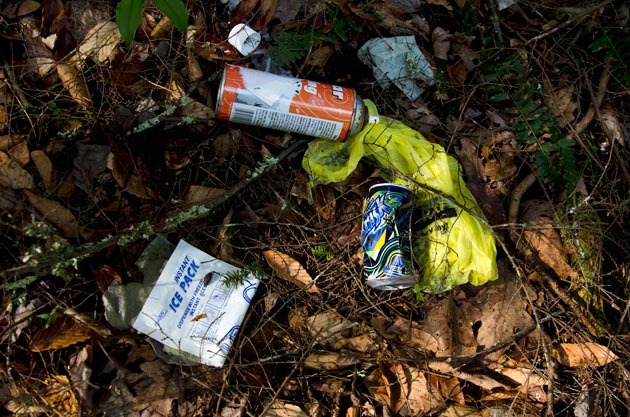

MJ: What were some of the more memorable meth crime scenes you saw?
SK: The first call we went on was in an abandoned trailer with no running water or electricity. The walls were covered with cryptic texts and morbid poems. Jason arrested three repeat offenders who were squatting there, and they were very nice about the whole bust. They would joke with Jason and talk about mutual friends. It was much more casual than I had expected. No handcuffs. Later in the week, on another bust, I witnessed the arrest of a couple that were caught cooking meth in their trailer. It was a very nice home that was well maintained with a beautiful view of the Kentucky hills. As we were pulling away, the neighbors—who were related to the arrested couple—stopped us to find out what had happened. They were with the daughter who had caught a glimpse of her mother in the police car and began sobbing. It was a heartbreaking scene.
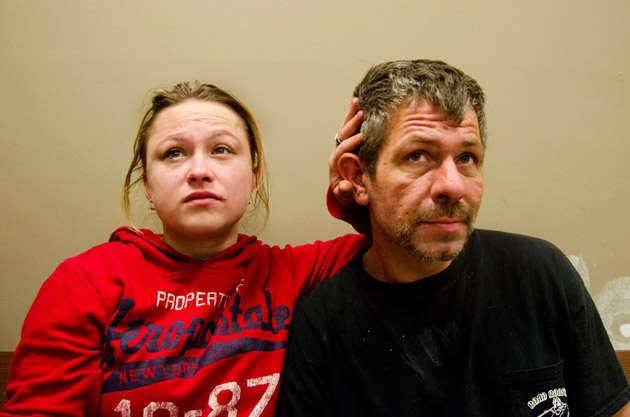
MJ: What’s the relationship there between the law enforcement and the community? It’s a relatively small population; I imagine there might be instances where the police are arresting people they know, that they grew up with?
SK: There were some people Jason knew because he had arrested them many times. Sometimes a last name would trigger Jason to ask if he and the arrested person knew people in common. It helps Jason to do his job to keep a friendly rapport with those he arrests. This way they are more likely to reveal additional information or may become informants later on.
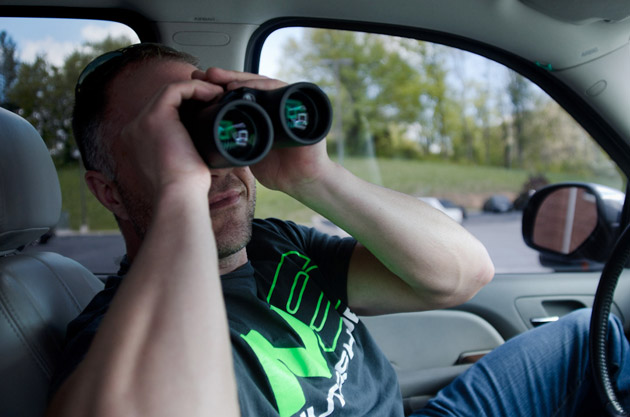
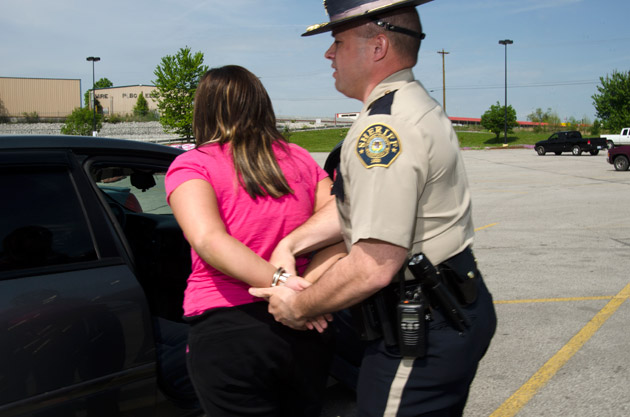
MJ: Did you find yourself sympathizing more with the police or the people being arrested? Did working with the police make people less willing to let you photograph them?
SK: I witnessed both the cops and the addicts behave poorly. I also found both to be kind-hearted and compassionate. When cops behave badly, it is usually learned behavior that can be traced back to poor leadership. It must be draining to work in drug enforcement. You see a lot of good people doing terrible things to themselves and their family and friends. It felt like most of the people I saw arrested had been down on their luck and got caught up on the wrong side of things. I also saw people who were willfully neglecting their children and causing harm to those around them. But I did not have enough information to judge them either way. As the week went on, I became more and more sympathetic to both law enforcement and the addicts.
Every mugshot of an arrest by the sheriff’s department goes up on the Laurel County Sheriff Facebook page. Most people were relieved to find out that I was not making those photos. Much of the county follows this page, and it is embarrassing to have your photo posted for everyone to see along with the official charges of your arrest. When I explained what the story was about, they seemed genuinely interested in the issue as it affected them personally.
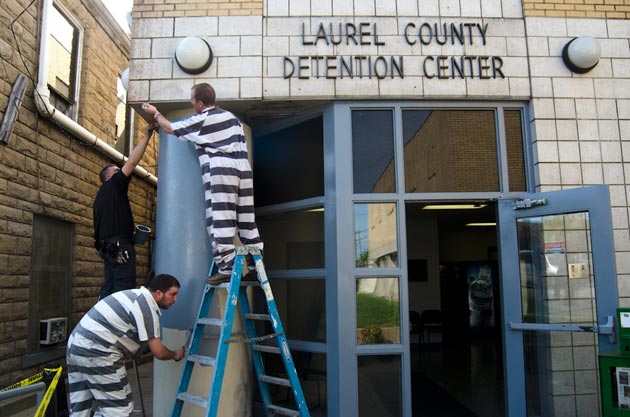
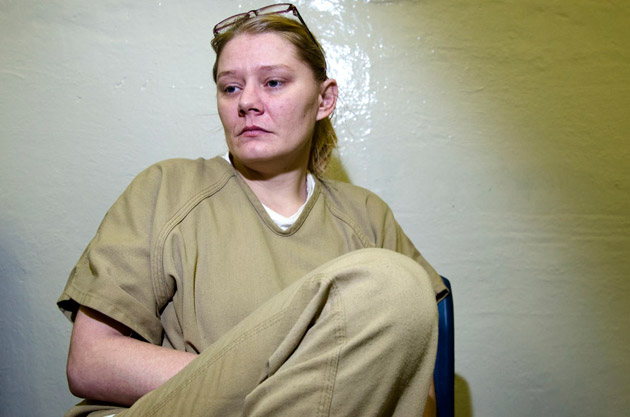
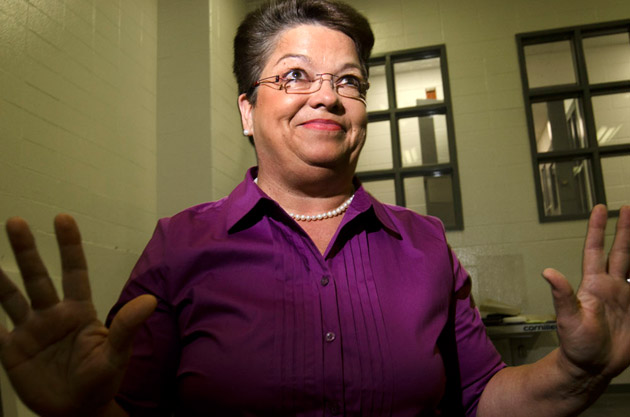
MJ: Were there any instances where you ran into people who didn’t want you to take their pictures?
SK: One day I had some free time while Jason was in court. I decided that, instead of sitting in the hotel waiting for him, I would go back and visit some of the homes where people were arrested. I wanted to talk with families and try to make some photographs that shared more about the circumstances surrounding the addiction. It was awkward because the last time they saw me I was with armed police officers that were taking a loved one away. The first family I met politely declined. I felt awful and thought about giving up on the idea. But I also knew that my desire to speak with family members was not a malicious one and so I went to visit another family. On my second stop, I met the cousin of a woman that was arrested the day before. She was at the house cleaning up the mess the cops had made when they dumped out trash to find evidence of meth production. I spent a few hours with her and her two daughters. She had struggled with her own meth addiction and was now celebrating six years of sobriety. A photograph of her and her daughters made it into the magazine and I just wrote her last week to make arrangements to visit with a copy.
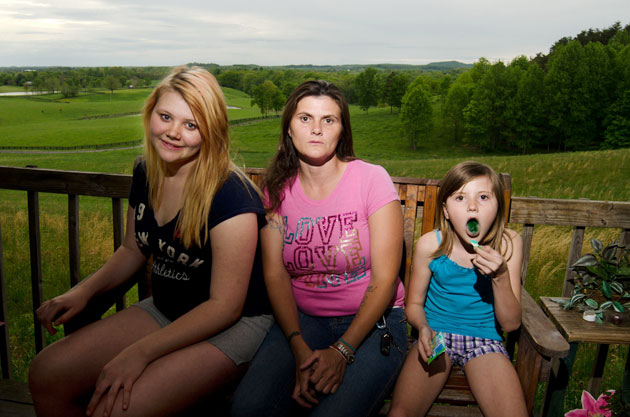
MJ: How did you find Karen Moore and how did you get her to let you photograph her and her family?
SK: I met Karen through Debbie Gilbert, who runs the addiction recovery program at Hawk Creek Baptist Church and inside the county jail. Debbie met Karen in these meetings during her yearlong sentence for meth possession. Karen had only been out of jail for two weeks when Debbie invited her to speak about her life at a weeknight recovery service I attended. Karen has a very sweet personality. She and her husband had been caught up in cooking and using meth for some time. I knew from her story that she had lost her children but was now living with them under the care of her mother, who also was in charge of many of Karen’s siblings’ children. Three of the four siblings had been caught up in meth addiction. I spent two hours with the family on a Saturday morning. It was a very loving household. Karen was still adjusting to life outside of prison. She was very open about the transition her three sons went through during the year she spent in jail. I felt fortunate to have the opportunity to try and make photographs that showed how someone could pull himself or herself out of addiction.

MJ: Your style of photography is incredibly intimate; you’re in the thick of things and make the viewer feel as if they’re right there. How do you get people to open up to you, to get so comfortable having you photographing them?
SK: I don’t fit the stoic, silent observer photojournalist stereotype. For a long time this made me feel very unprofessional, but I have come to realize that it helps makes me endearing to people. I am very unintimidating, physically quite small. I am clumsy; I trip over things. I overshare about my own personal life. Long ago I made a decision that I had to be willing to be as vulnerable and as transparent to the people I met as I was asking them to be for my camera.


MJ: We really wanted to be careful to not portray the people in this story in a stereotypical light of sad/blighted/ignorant Appalachian people, which is one reason we felt strongly about working with you on this. Do you run into much reluctance from people to be photographed out of fear of how they’ll be portrayed?
SK: I did not have that problem while working on this story. I think most of the people I interacted with understood how meth was affecting their community and were genuinely interested in the issues that the story was raising. I definitely questioned some of the images I made. If I am not doing that then I am not doing my job. I am still questioning some of the images I made during the assignment. I still wrestle with some of the murky grey areas that I ran into during this story while trying to have a positive relationship with both meth addicts and police officers.
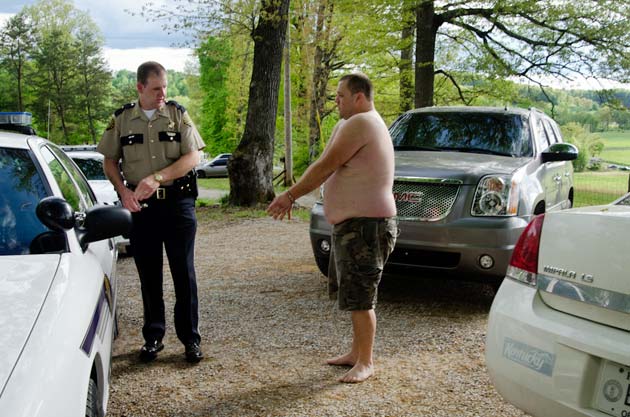
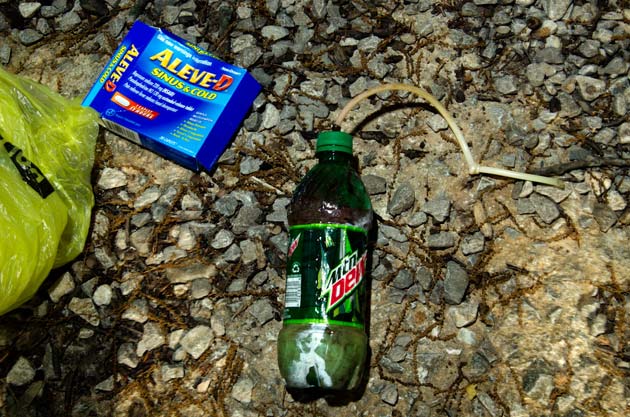
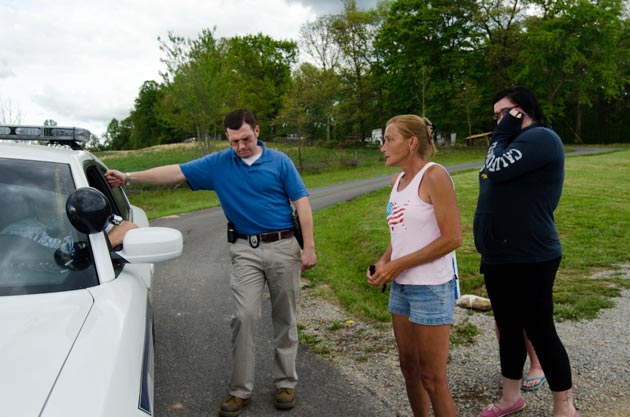
MJ: You’ve been shooting in this area for a while. What drew you to this part of Appalachia? How long have you been there?
SK: I started coming to southern Ohio for a project about a dystopian compound called Skatopia in 2009. While I was there, I began reading about the area and found it to be a very contentious place in terms of the history of how it had been represented through photography and film. I had always been influenced by James Agee and Walker Evans’ Let Is Now Praise Famous Men. It became evident that Appalachia was a place where representation had long been vexed. Appalachia proper extends from Mississippi to New York: It is this huge unwieldy thing that is hard to define when looking at the full stretch of land it occupies. I wanted to try and make work that would extend the complicated legacy of photographs made by Walker Evans, Earl Palmer, Doris Ulmann, William Gedney, Susan Lipper, Shelby Lee Adams and many others. I have always been interested in regionalism and was looking for a place where I could make images that addressed a legacy of image making within the documentary tradition. I sort of stumbled upon the perfect place to locate this type of project. I have spent the last three summers in central Appalachia: Tennessee, West Virginia, Ohio, and Kentucky. I just arrived for my fourth summer.
MJ: And what keeps you there? Why do you keep coming back?
SK: I see my work as an ongoing narrative that unravels very slowly. The closer I get to people, the more connections I make with places in the region, the harder it is for me to leave. So I keep investing time trying to say something genuine and unique. Environmental concerns over strip mining, the decline of the coal industry and its economic effects on communities, and the failure of government-funded Suboxone to cure pain pill addiction are just a few of the things that keep me deeply engaged in making work about central Appalachia.
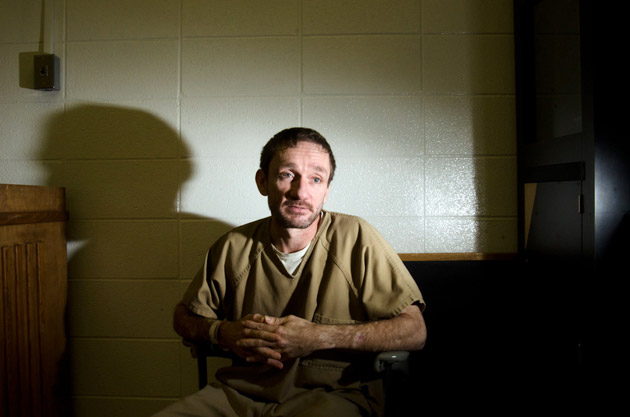
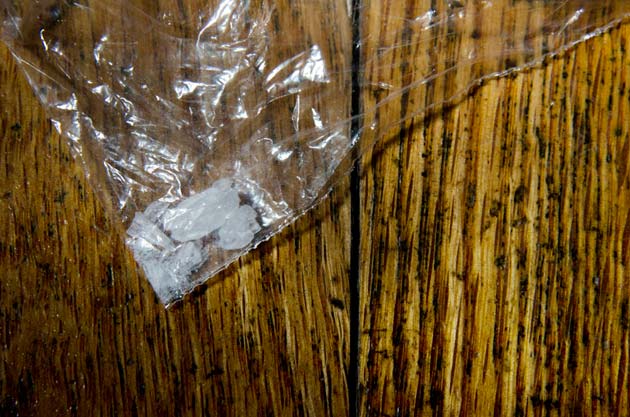
MJ: What’s next? Any plans on where you’ll head next, or do you plan on sticking around that part of the country?
SK: I have to move back to California at the end of September to finish my last year of graduate school. I’ll be living out of my car, shooting every day until then. I have a wonderfully hectic year ahead. I am releasing my first book, From The Study on Post-Pubescent Manhood, with a small publisher out of Canada called Straylight Press, this month. I will also be writing 10 short essays, to be published every 6 weeks, about my work and the representational issues it raises for a photojournalism website called Bag News Notes. I’m making a final cut of my first feature length documentary film. It is a companion piece to the book that is being released. It is a very intimate portrait study of someone I met while working in Ohio. I will also have my first solo show next February at Drkrm Gallery in Los Angeles.
Next summer, I will prepare to move somewhere very different from California. It’s never been a great fit for me. I’ve been thinking a lot about Tennessee. It is centrally located to so many compelling places and it will allow me to continue to work on making images in central Appalachia. I have some time to figure that out. More than anything I hope to find a way to make just enough money to continue working on these long-term projects that I refuse to end.


